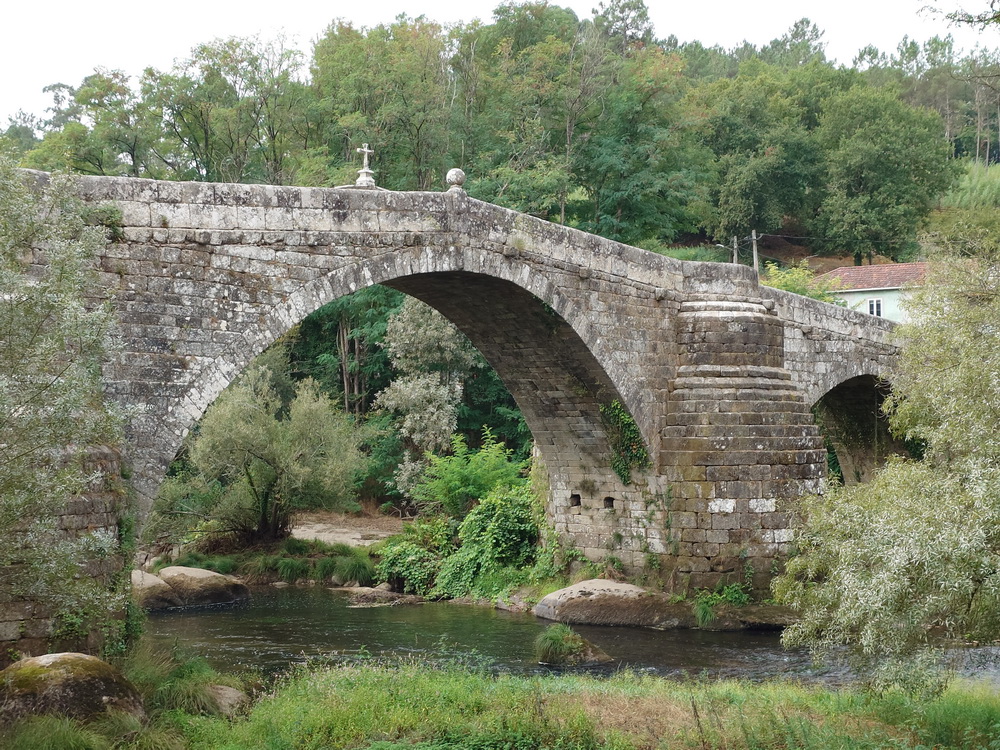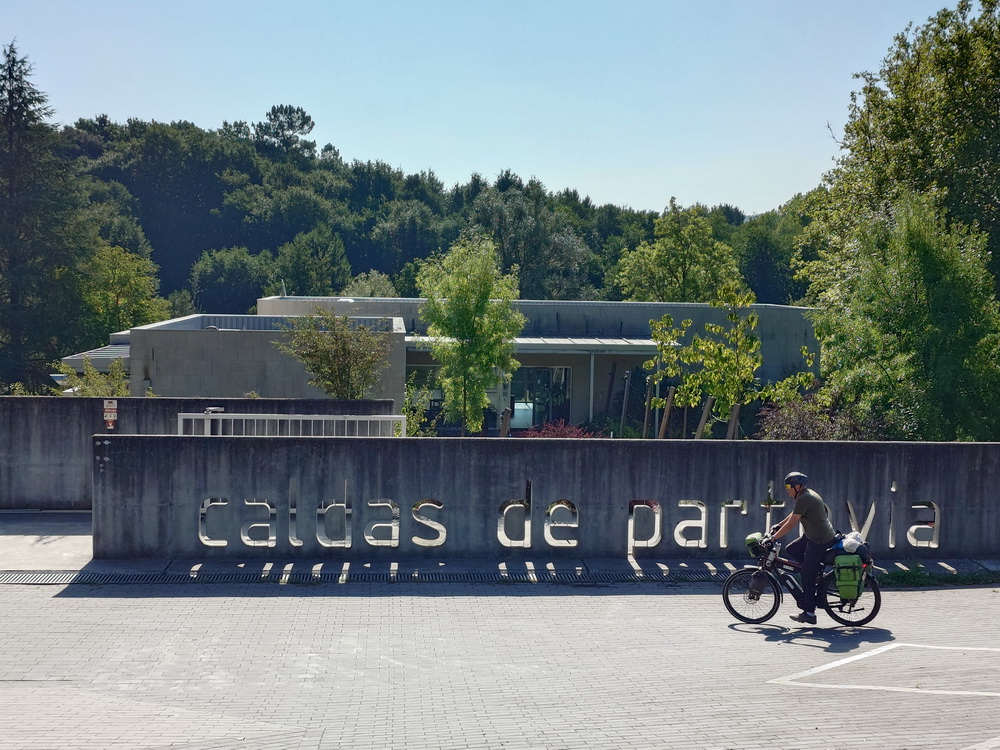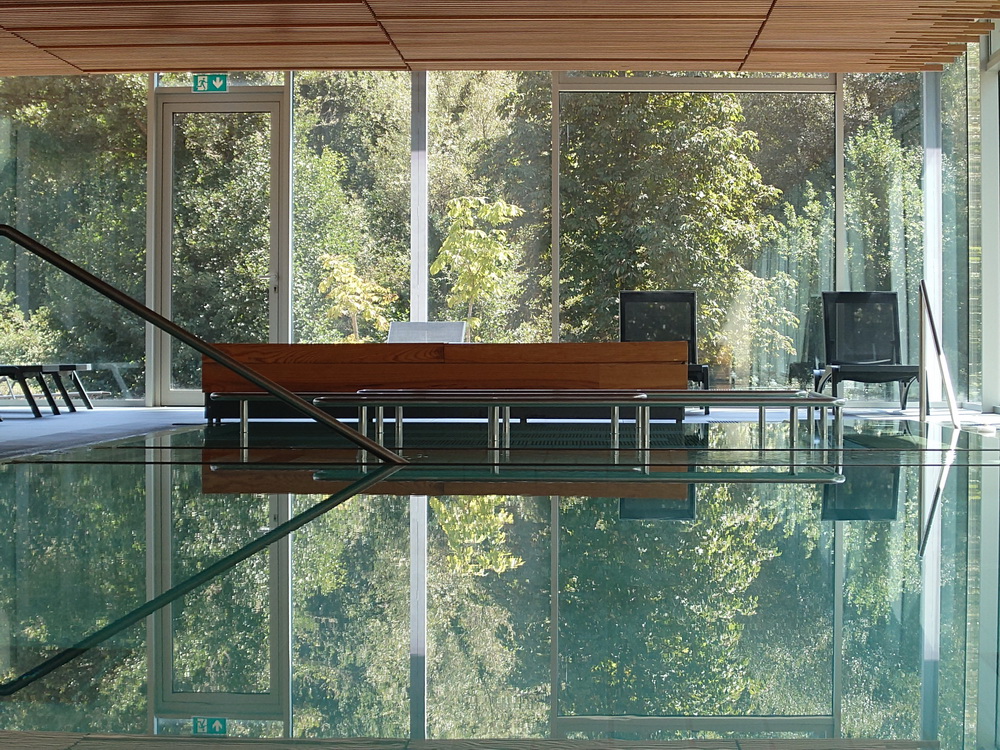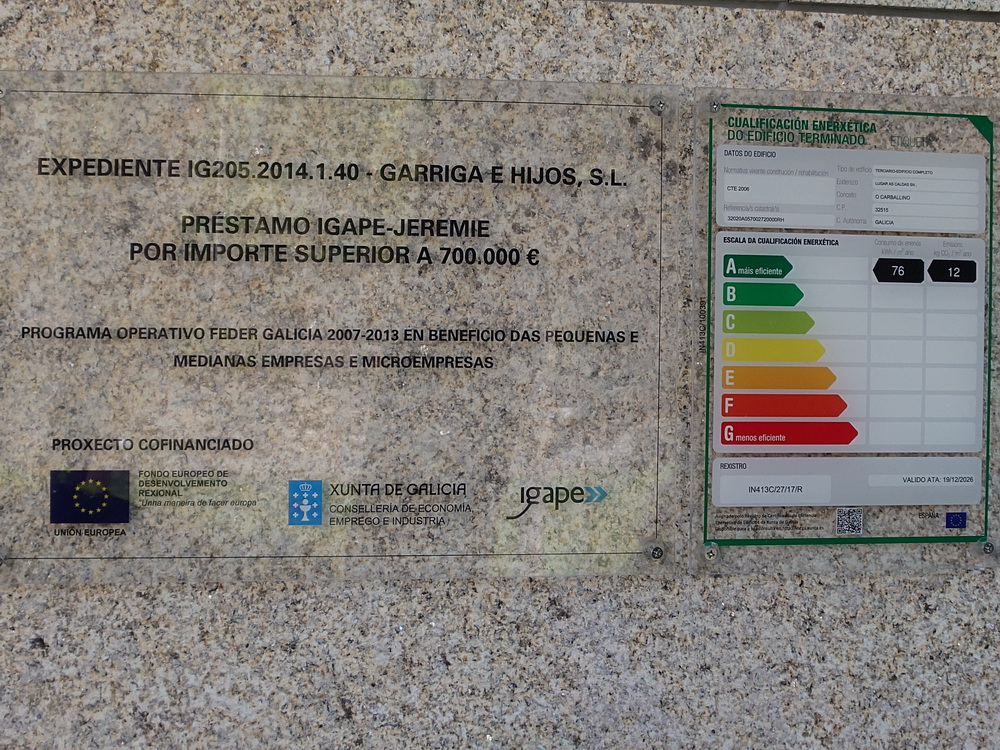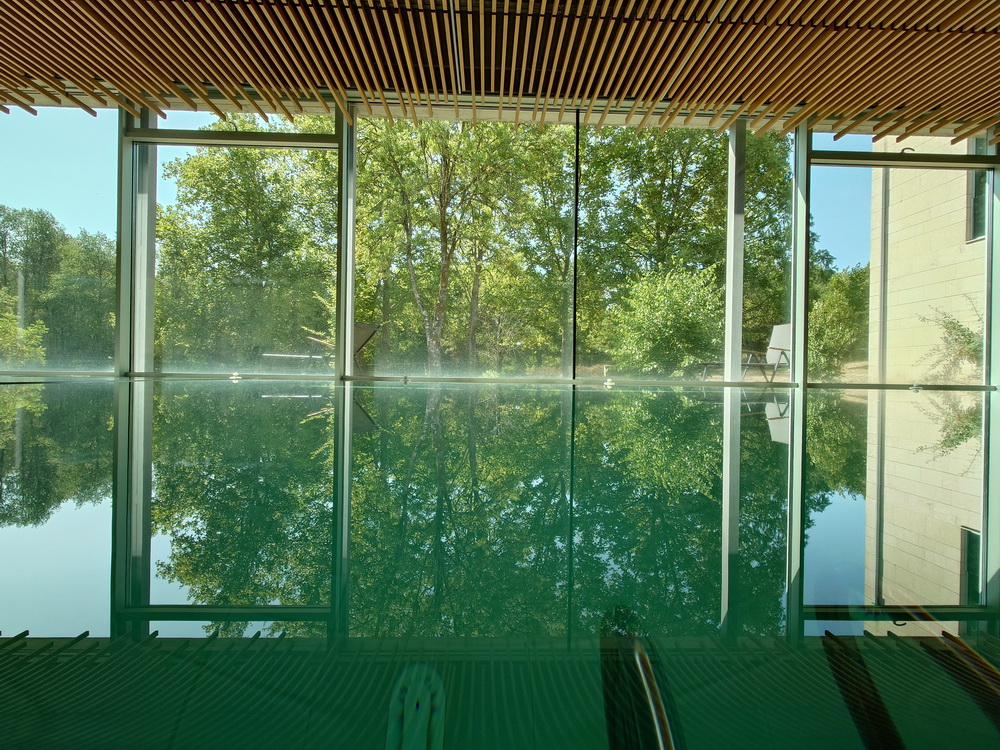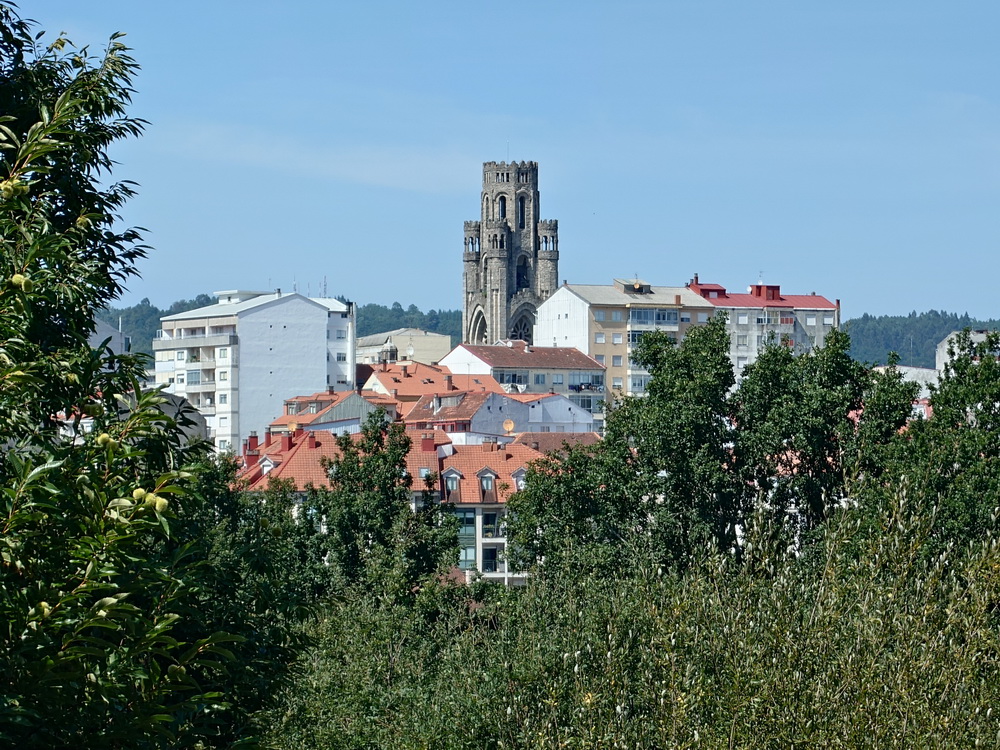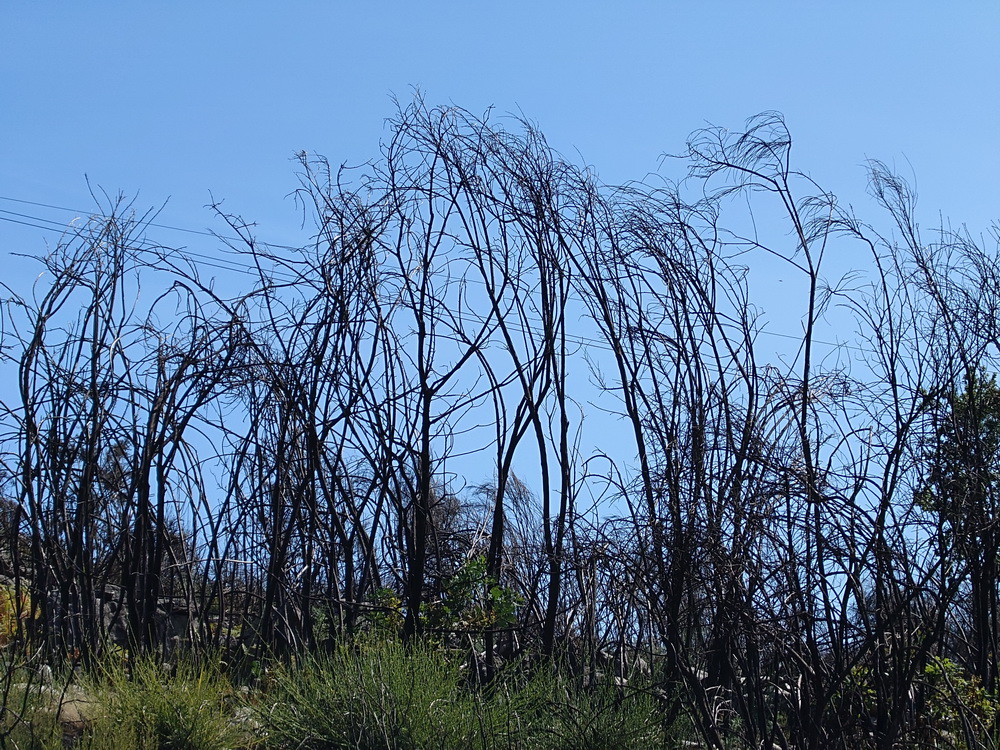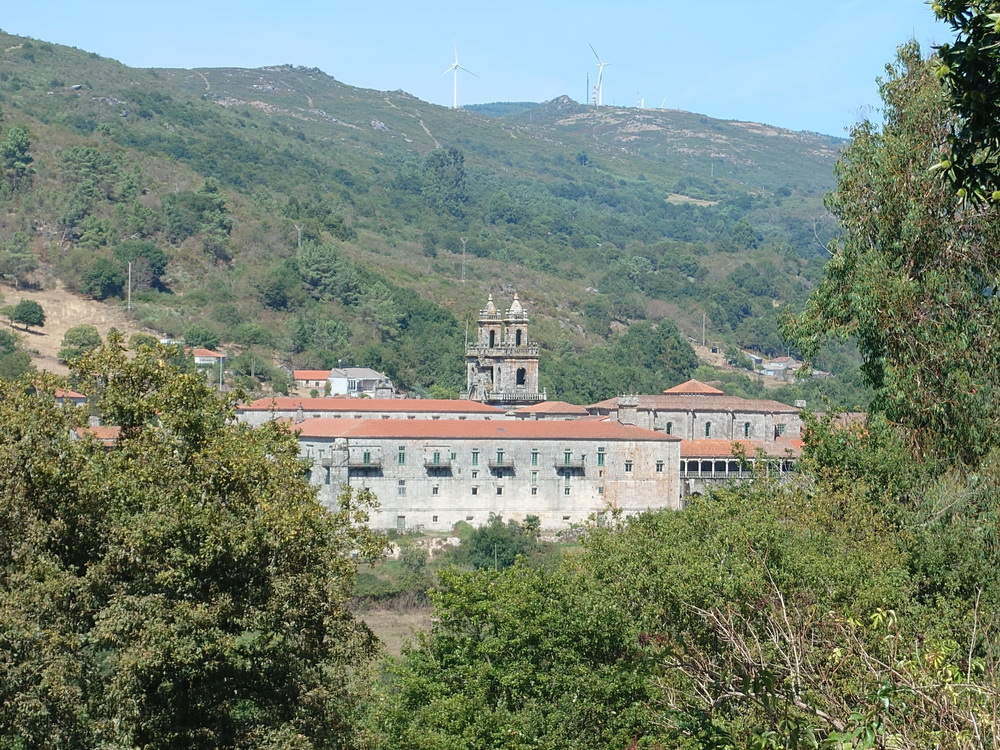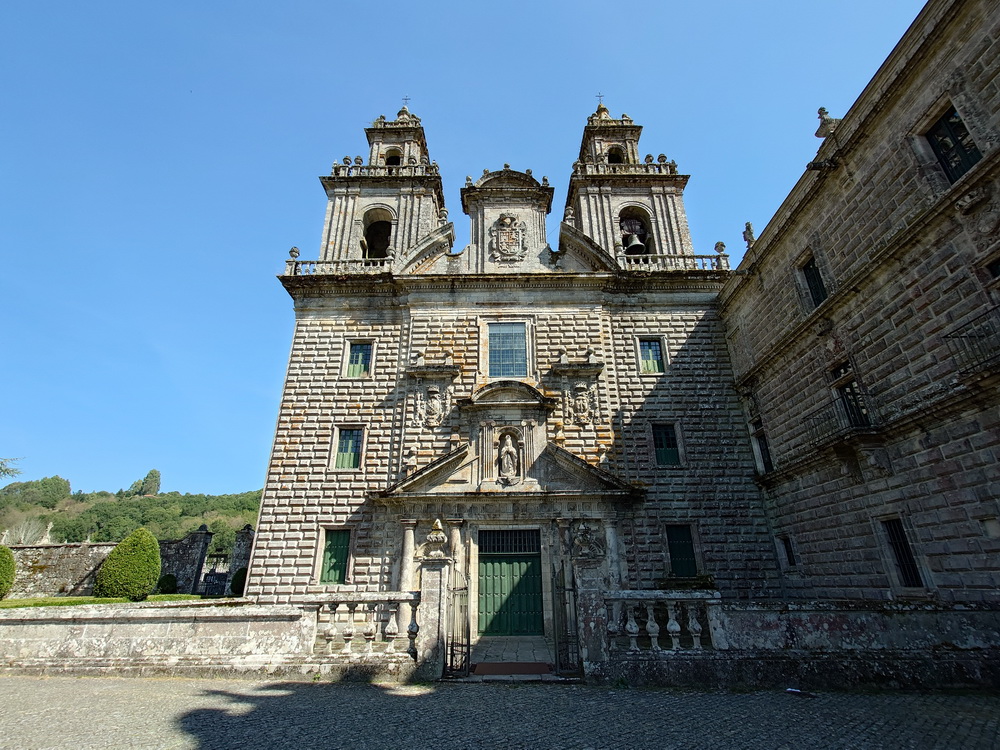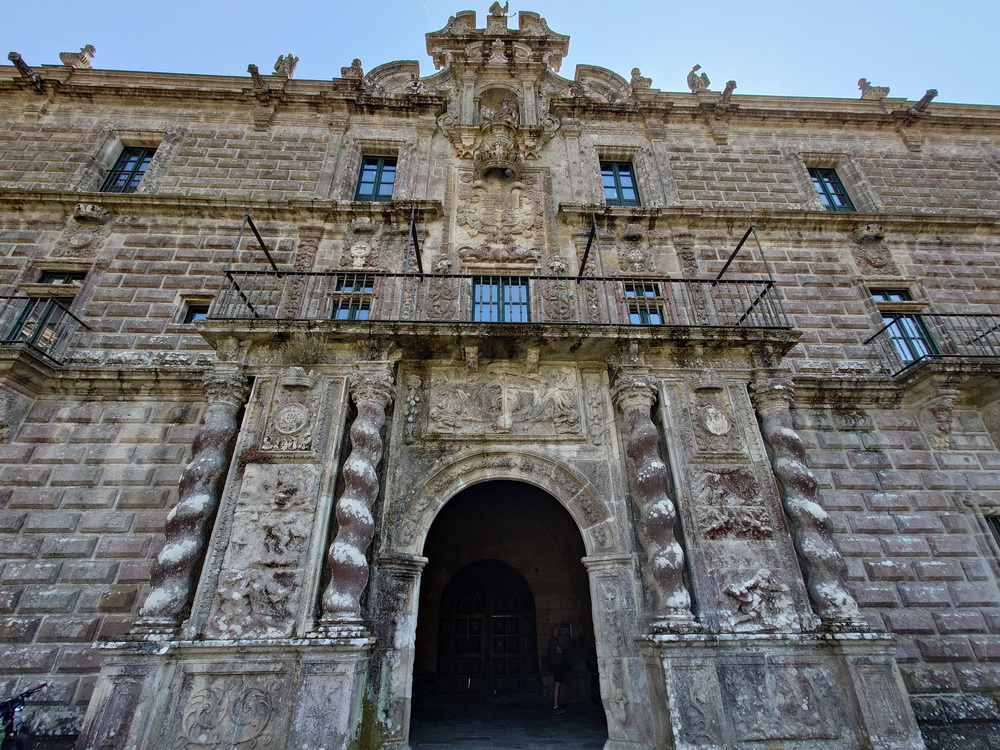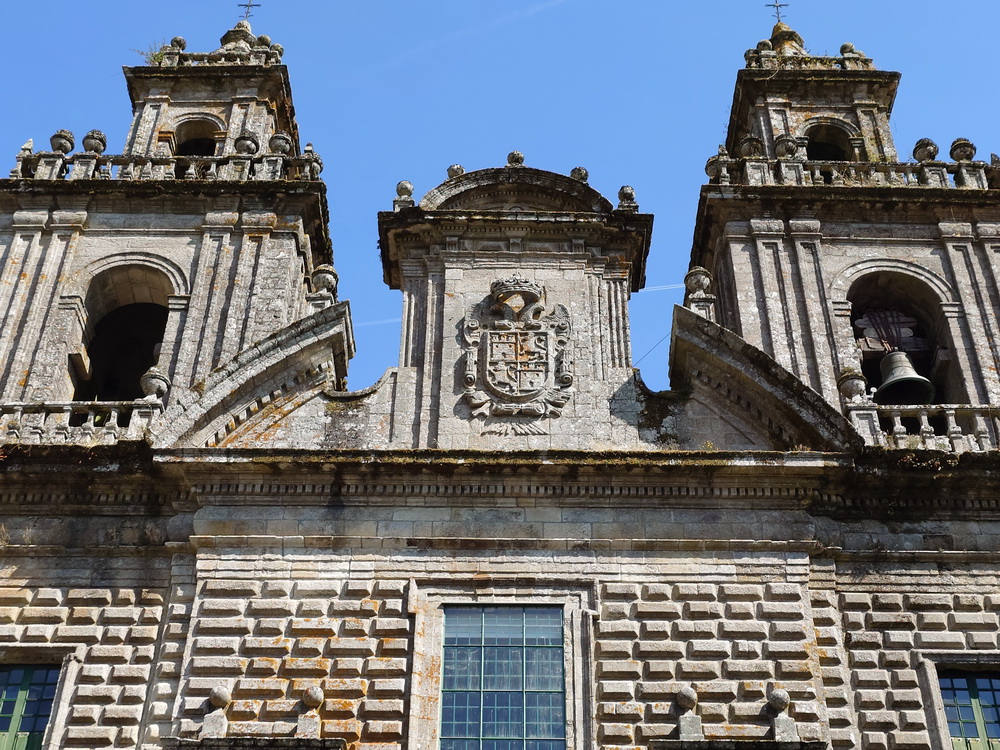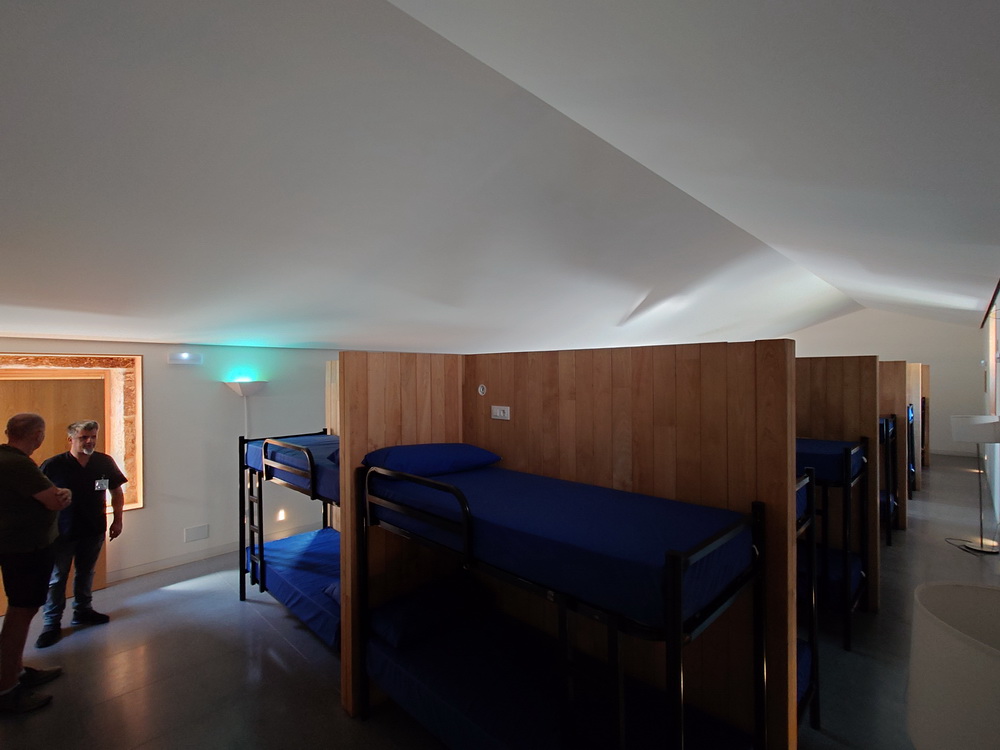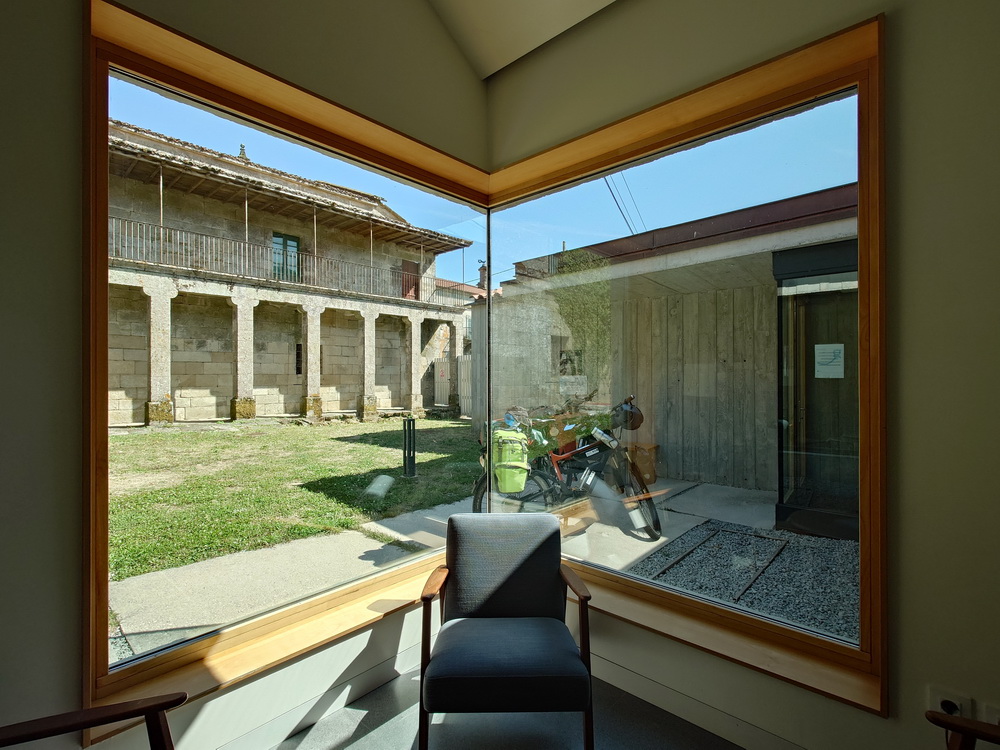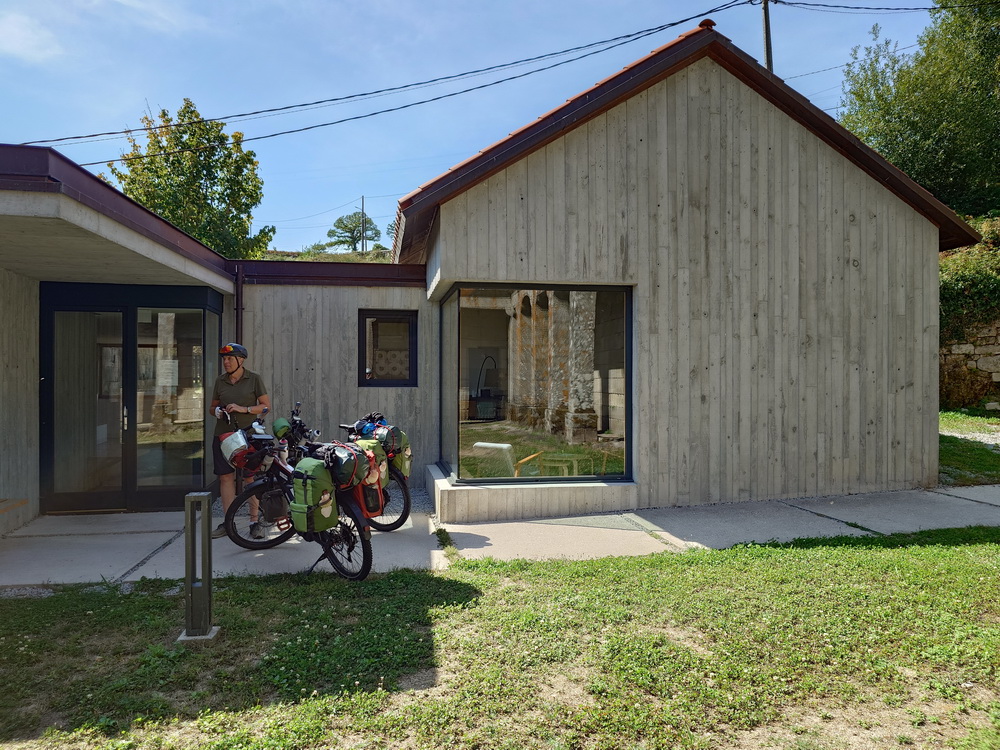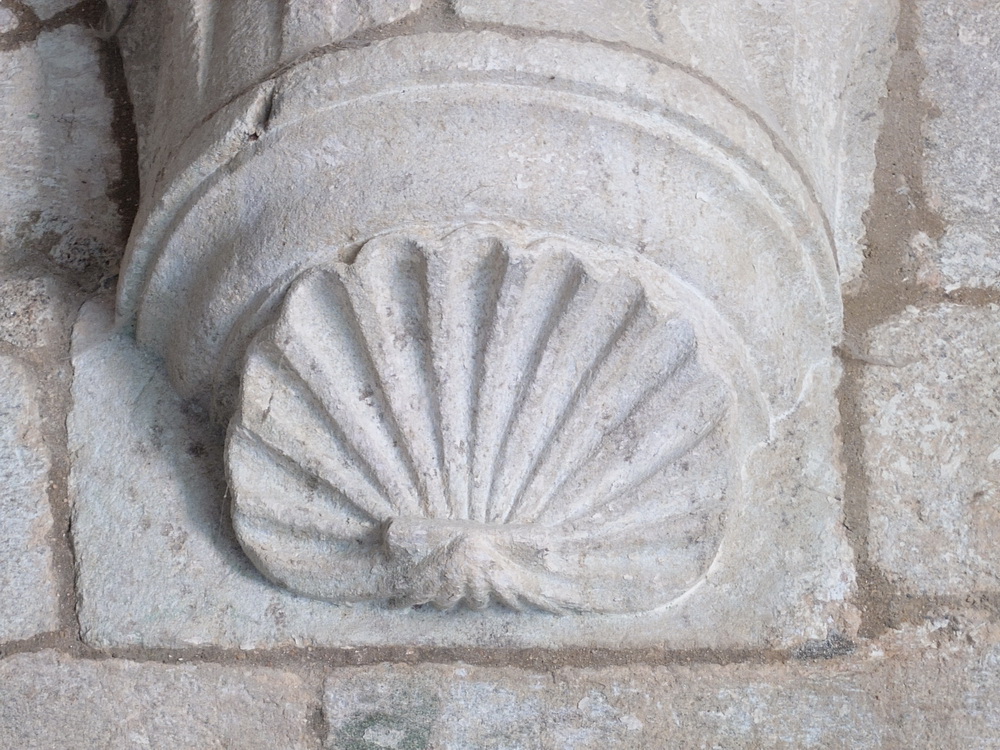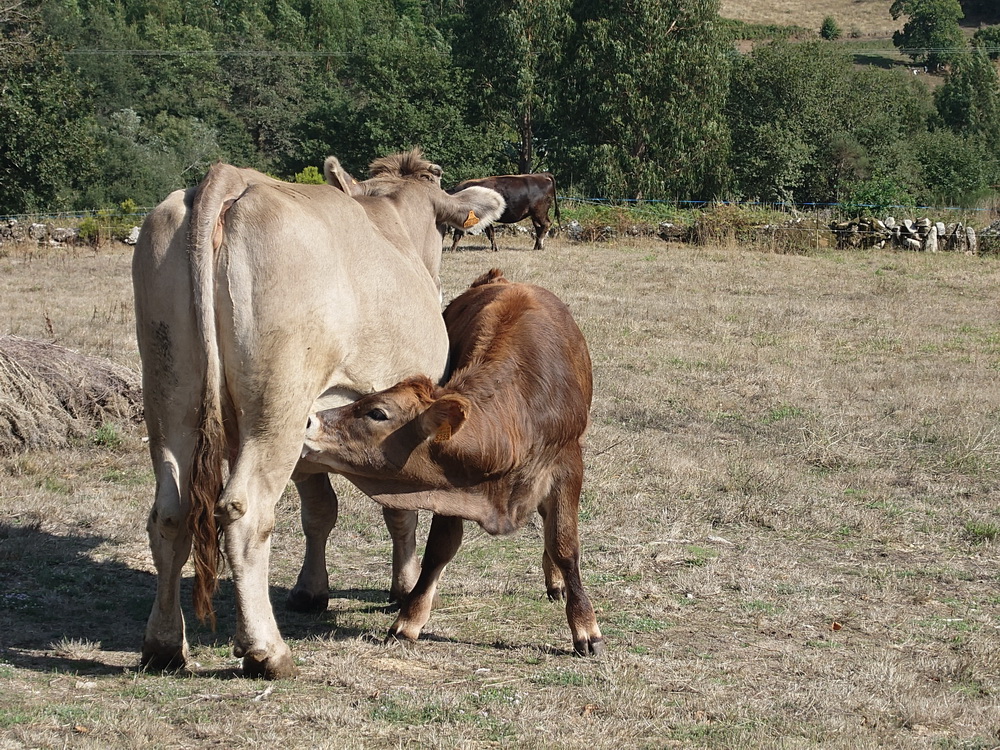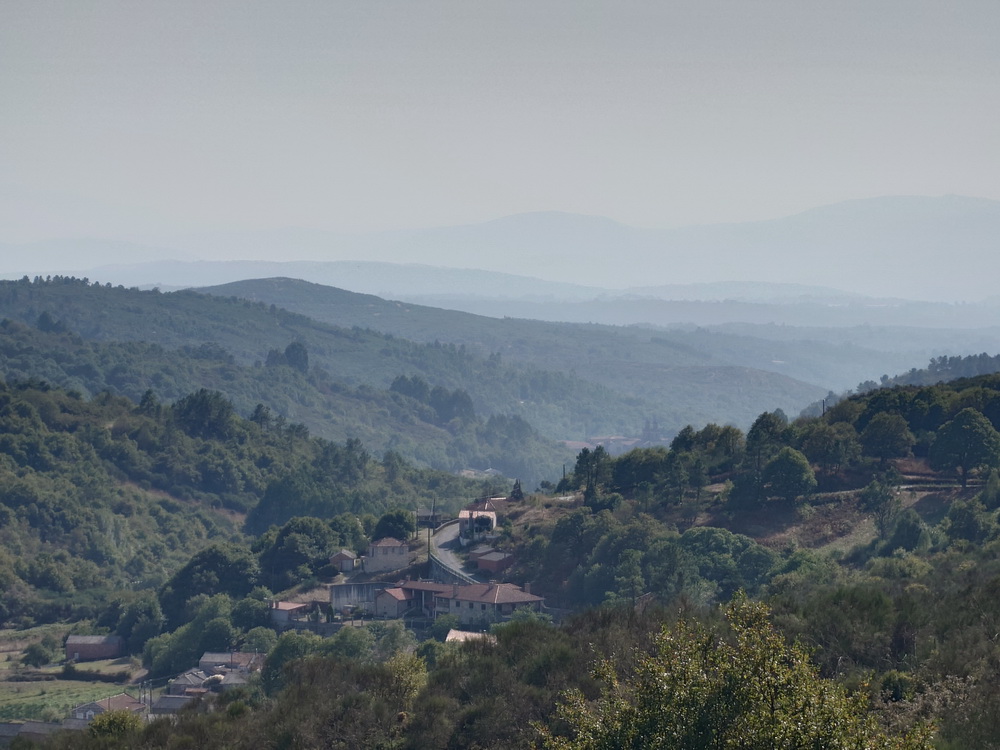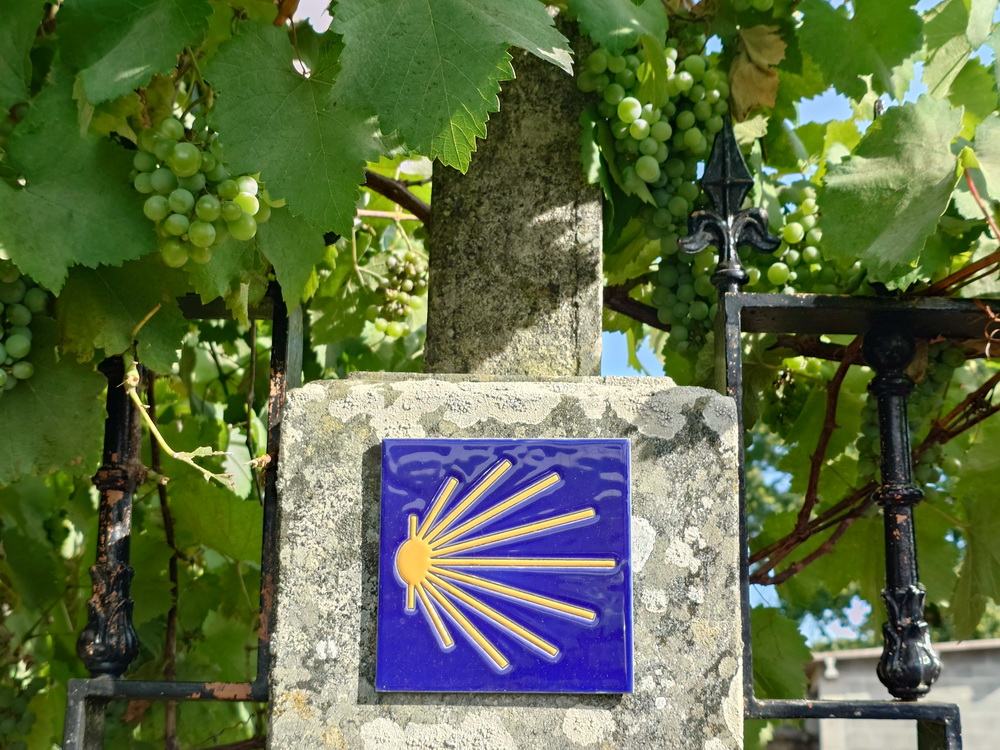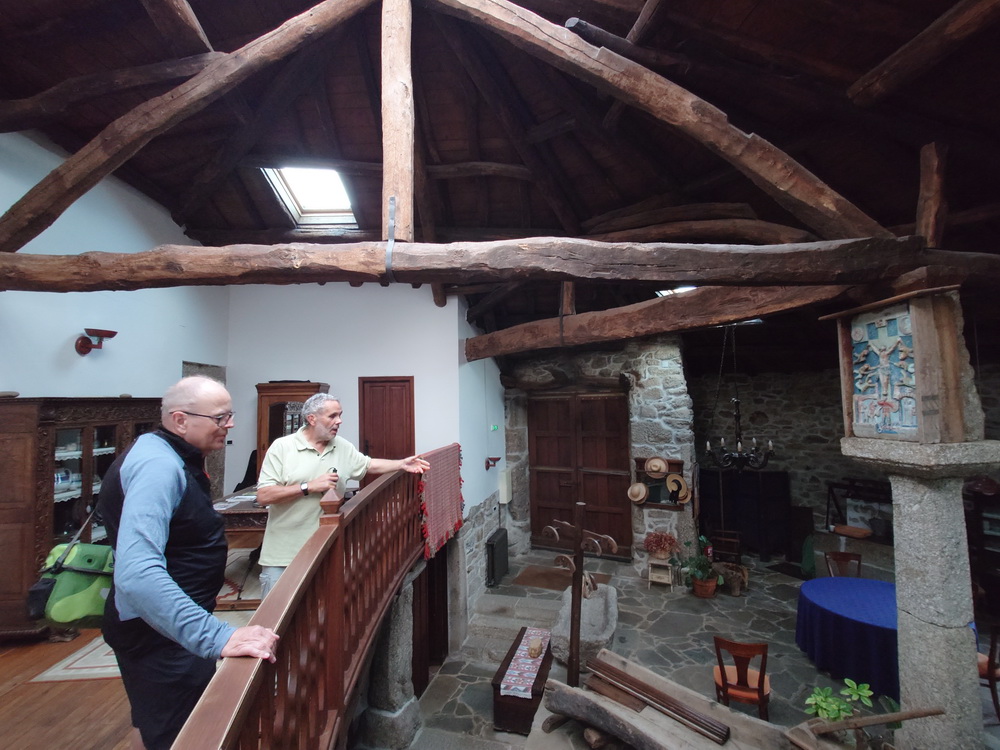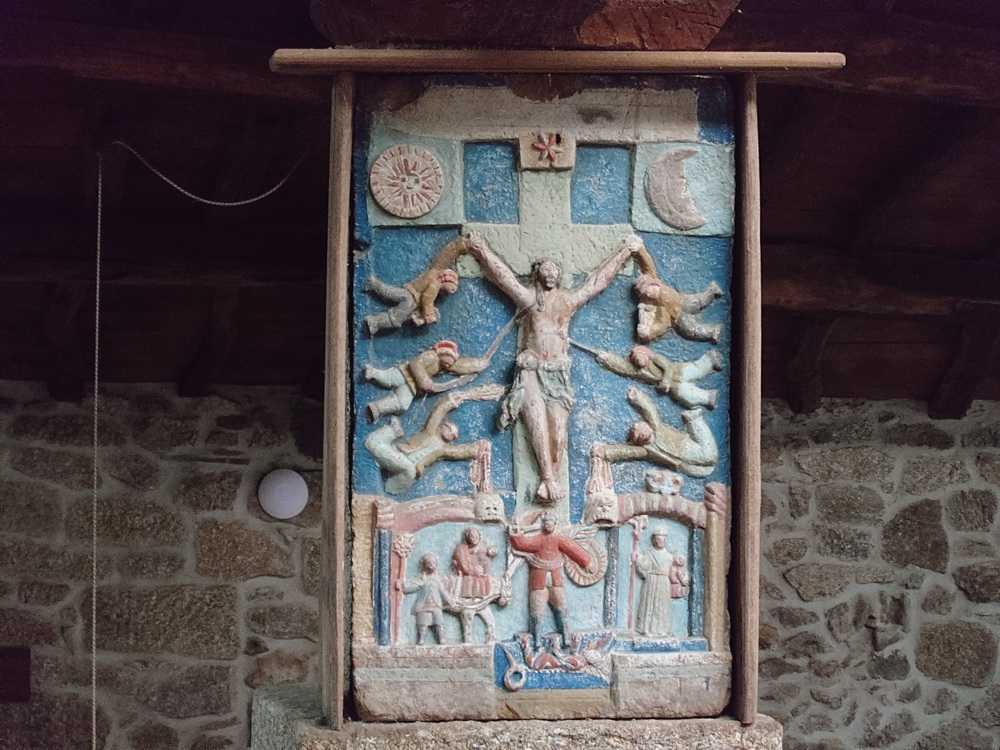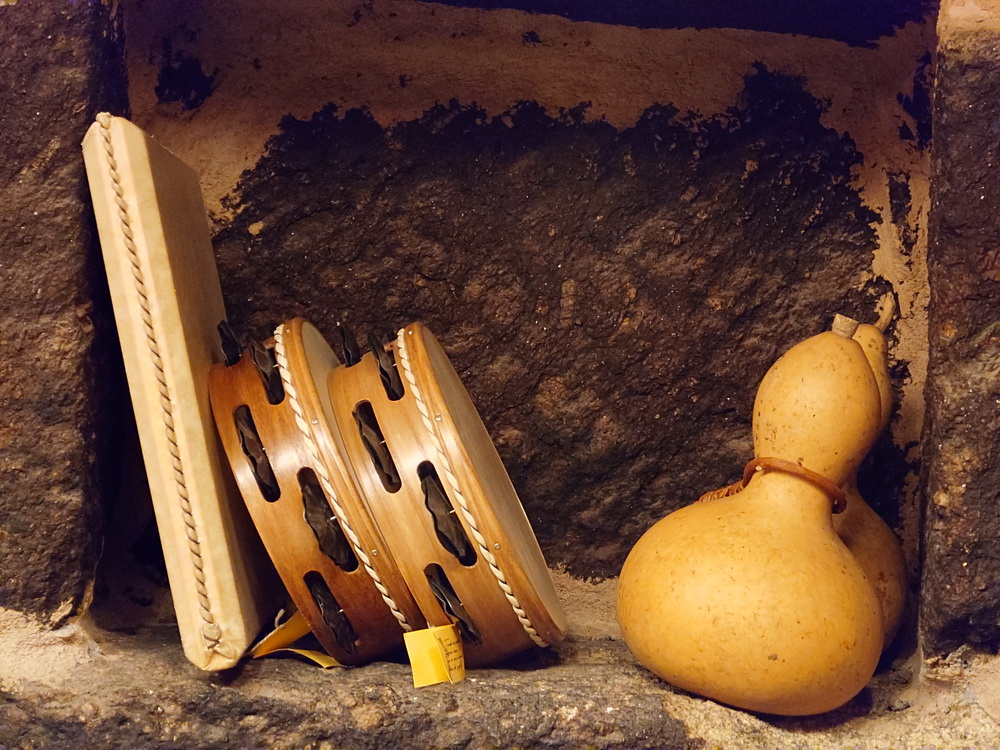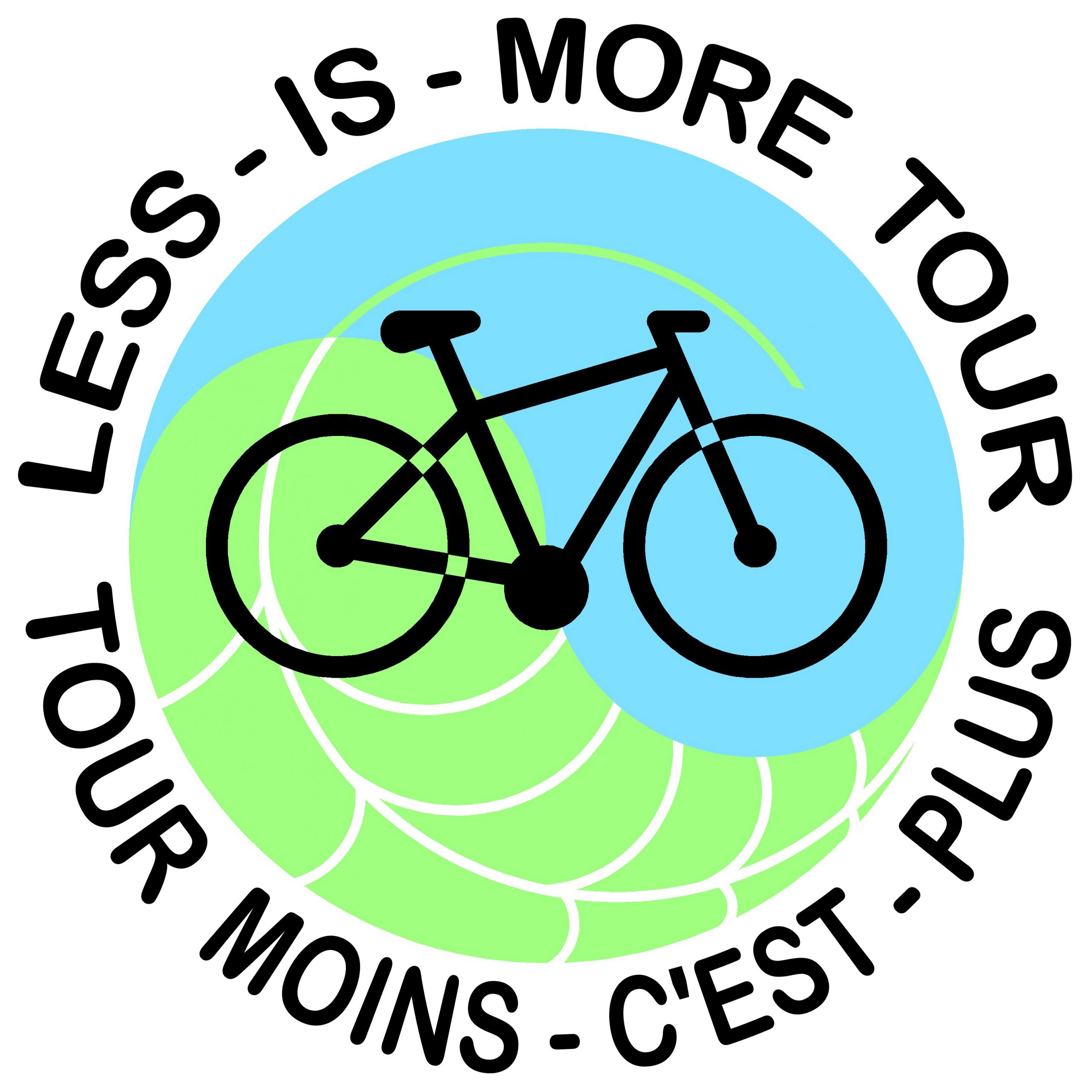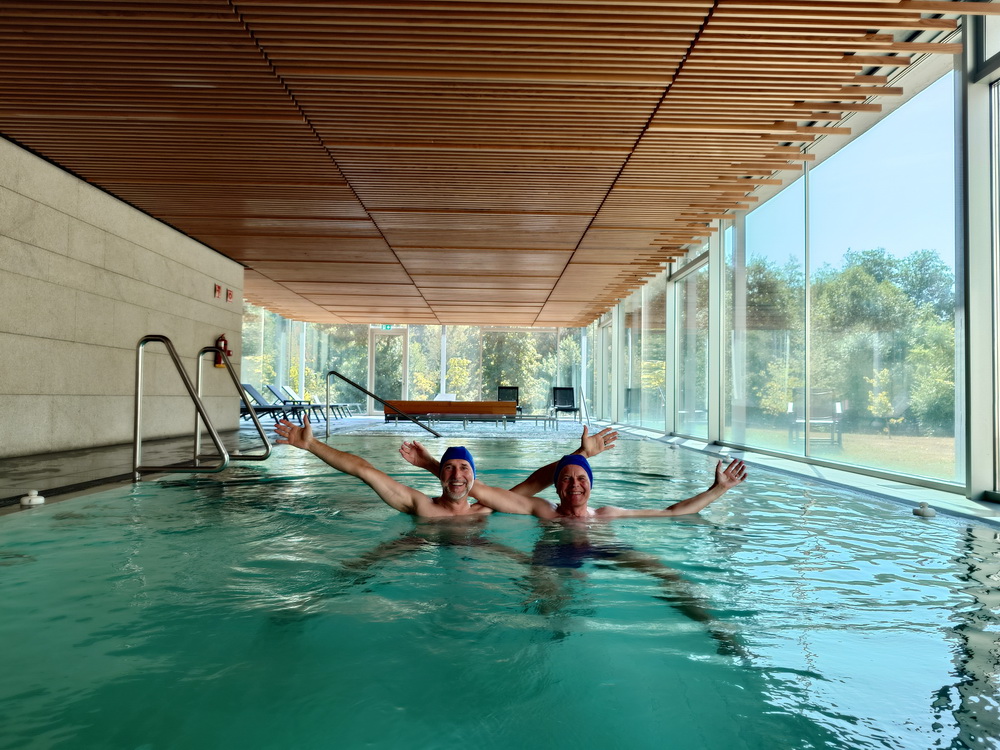5th September a new desire had risen overnight as yesterday at the tourist information we had already seen several leaflets about the region of Rio Miño/Minho being known for its hot springs, and it just made us longing to jump into one of them. There seemed to be a choice from very natural hot springs where people just were able to sit in hot pools right by the riverside, or other more sophisticated ones integrated in Spa and Wellness temples with hotel complexes etc. which mostly hurt my architectural eye. So we followed not only the wish to just sit in warm water, but also to satisfy the architect’s demands for style and form.
Robert had luckily found one which was on our route and seemed to fulfil all our demands.
But at first we had to take our breakfast in our hotel, which seemed to be the place where the locals from Ribadavia met in the morning to start the day before they would go to work.
It was nearly as loud as it had been in the evening.
We decided not to continue along Rio Miño which would have brought us to the next bigger town Ourense, but to follow the river Avia which branches off at Ribadavia.
It was a beautiful green valley which had unfortunately seen some forest fires along the way. The Italo-Spanish couple who had invited us last night to join the evening of dessert-culture at the Jewish museum came from Leiro and was very fond of it. On the way getting there we crossed the river over the medieval bridge of San Clodio passing through a very old village which was partly in ruins. Everywhere you could see the local granite being used for construction in ways I had never had seen before. They trusted the dense rock material in all different functions like in columns which were shaped like a fork to hold the beams, or building the span of bridges with a certain size of rock piece crossing the river.
At Leiro we tried to find a place to get us something to take away to eat as we had no clue when we would get the next chance on our tour before the hot springs. At a little grocery shop the lady was so fascinated by our project of biking the Camino that she was so nice to give us some postcards of Leiro as a souvenir.
We had to leave the valley of Avia to climb up to reach Partovia, where at the end of a very steep downhill driveway the thermal bath of the “Caldas de Partovía” was located.
There were hardly any cars in the parking and we felt like the only clients, especially when they told us that we could even immediately book a massage treatment for both of us.
It was just perfect as we hadn’t had a massage since our first day of the “Less is More Tour” in Kempten two months ago.
Even in terms of carbon footprint this oasis of wellness just was perfect, because the building dates back to 2017 and has gained an Energy Pass of classification A. The hot spring is giving just natural energy from mother earth. A very simple architecture framing the landscape outside mirrors in the pool with its trees having already a first autumn’s touch.
After our treatments we enjoyed our sandwiches outside on the terrace and had to leave as they closed the place for the siesta break. We continued our tour passing Carballiño, a town which had surrounded the church tower with ugly buildings and didn’t look very appealing so we even didn’t stop. Following the river Oseira we climbed more and more into the mountains of the Sierra de Martiñá.
The huge monastery of Santa Maria La Real de Oseira surprised us in the middle of nowhere as the “Galician Escorial” being on the Camino Sanabrés. The name Oseira goes back to the Latin word “ursus” for bear which relates to the rough location up in the mountains. This Cistercian community would have offered a tour at four o’clock, but that would have been unfortunately too late for us, because we still wanted to cover a lot of distance that day. The architecture already looked spectacular from the outside, and behind the monastery I discovered a jewel of modern architecture as the hospice for pilgrims was just recently renovated in 2022 in a beautiful style.
We were a bit hungry, but could only get some cheese with our drinks in a small bar being surrounded by many cats which were very interested in getting a piece from us. From the valley of Oseiro we climbed even higher to reach a ridge close to the Sierra del Faro from where we had a great view over the whole landscape we had biked through over the last two days.
Rolling down to Furco on the other side of the pass was a real joy as we could keep the bikes rolling without any effort, but we decided not to lose all the altitude and avoided to continue in the direction of Chantada. We stayed in the surrounding hills to bypass the city to reach Vilela before the sunset and were again following parts of another Camino. The so called “Winter-Way”.
The Casa Romualdo was a historic bed and breakfast, which was run by Francisco and his wife Maruxa. When we entered the courtyard of their farm to ask if they had a room for us they said they had one but excused themselves that it was not ready as they had a TV team filming the place in the morning. We waited outside and had some olives and something to drink in the last sunrays. But as time went on the sun had set and it got a bit chilly.
Nearly an hour later we were invited to come in by Francisco, and one of the reasons we needed to be patient was the fact that he was blind. Nevertheless, he took his time to show us around and the house was a real marvel of medieval history and family tradition. He was so happy to explain to us all the details like the granite sculpture of a Jesus being in the centre of the house up on a column. It must have been from an ancient chapel integrated centuries ago into this house as it still had the original colouring on the granite figures like they used to have them on the Porta da Gloria at the cathedral of Santiago.
We had the privilege to be in the “Jesus room” as it would be the last thing we would see entering our room at night and the first thing getting up in the morning and leaving the room.
As he had been so proud showing us all around I got him his white cane which he had left on the handrail and laid it into his hand. Maybe a gesture of respect which he remembered.
We moved into our room and took a shower before we were called for dinner.
The dining room had a low wooden ceiling and a huge fireplace. Everything looked like in a living museum. Besides the dried bottle gourd many other objects were everyday utensils where we couldn’t figure out what they could be used for. Especially one big box lying on the sofa attracted our attention. While we were having our dinner still two ladies arrived late, but were too tired to join us after their hike and went directly to bed. After we had finished dinner Francisco open the mysterious box on the sofa for us and showed us his hurdy-gurdy.
He played it for us and explained us the techniques of this medieval instrument. I remembered hearing it at the arched passage at the museum of the cathedral in Santiago. But now I learned how the basic sounds have to be adjusted to play the ground layer of tones and to add the melody on top. Francisco had tuned the instrument for one very famous melody of Beethoven’s ninth symphony Ode to Joy.
Francisco confided me his instrument by putting it on my lap and fixed it with a leather belt around my waist. With the right hand I had to turn the wheel to create the first continuous sound carpet of strings. Now I had to push with my left fingers the buttons to play the melody on top of it. I had never ever played such an instrument before, but at the end I managed to play and sing the “Ode to Joy” with my second try. What an exceptional and intense first lesson. Again we were filled with so many enriching experiences and found our way to bed late.
